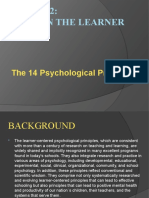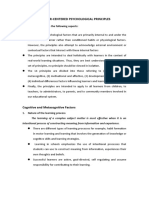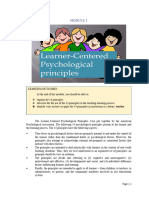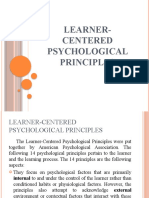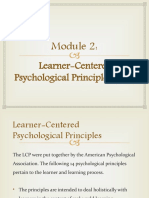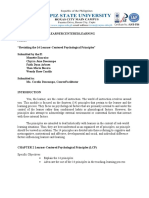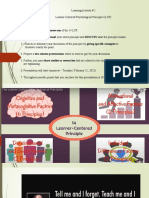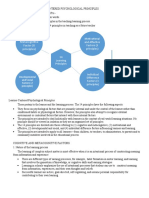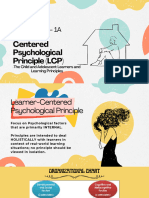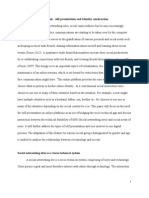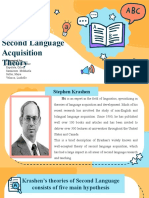0% found this document useful (0 votes)
145 views7 pagesModule 2
The document summarizes 14 principles from the American Psychological Association related to learner-centered education. The principles are divided into four categories: cognitive/metacognitive factors, motivational/affective factors, developmental/social factors, and individual differences. Some key points are:
- Successful learners are goal-directed, strategic, and take responsibility for their learning.
- Learning involves constructing knowledge from experiences and linking new ideas to prior knowledge.
- Motivation and emotions influence learning, with intrinsic motivation and positive emotions enhancing it.
- Developmental readiness, prior experiences, culture and environment all impact a learner's abilities and learning.
Uploaded by
shine BrightCopyright
© © All Rights Reserved
We take content rights seriously. If you suspect this is your content, claim it here.
Available Formats
Download as DOCX, PDF, TXT or read online on Scribd
0% found this document useful (0 votes)
145 views7 pagesModule 2
The document summarizes 14 principles from the American Psychological Association related to learner-centered education. The principles are divided into four categories: cognitive/metacognitive factors, motivational/affective factors, developmental/social factors, and individual differences. Some key points are:
- Successful learners are goal-directed, strategic, and take responsibility for their learning.
- Learning involves constructing knowledge from experiences and linking new ideas to prior knowledge.
- Motivation and emotions influence learning, with intrinsic motivation and positive emotions enhancing it.
- Developmental readiness, prior experiences, culture and environment all impact a learner's abilities and learning.
Uploaded by
shine BrightCopyright
© © All Rights Reserved
We take content rights seriously. If you suspect this is your content, claim it here.
Available Formats
Download as DOCX, PDF, TXT or read online on Scribd
/ 7



